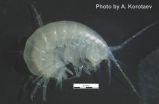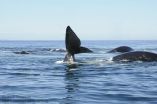Historical land use an important factor for carbon cycling in northern lakes
2015-05-18
(Press-News.org) The historical past is important when we seek to understand environmental conditions as they are today and predict how these might change in the future. This is according to researchers from Umeå University, whose analyses of lake-sediment records show how lake-water carbon concentrations have varied depending on long-term natural dynamics over thousands of years, but also in response to human impacts over the past several hundred years. The study has been published in PNAS (the Proceedings of the National Academy of Sciences).
Environmental monitoring programmes over the past 30 years have observed an increase in the organic carbon concentration in many Swedish lakes. This increase has consequences for water quality and for the functioning of aquatic ecosystems. The hypotheses for this increase - also referred to as 'brownification' because of the more humic color of the water - include recovery from acidification, modern changes in land use and climate change. These hypotheses and the monitoring data reflect primarily shorter-term processes and do not include insights into long-term changes.
A research group at the Department of Ecology and Environmental Science at Umeå University shows in a new study, published in PNAS (the Proceedings of the National Academy of Sciences) that other, historical factors also play an important role for lake-carbon cycles. Their study shows that small-scale but widespread exploitation of the landscape over several hundred years and potentially longer has had a significant impact on the organic carbon concentration in lakes and also on trophic conditions.
'From analyses of sediment records from a number of lakes across central Sweden we find that organic carbon concentrations further back in time - as much as 10,000 years ago - were at higher levels comparable to those we measure today. However, in response to forest grazing of livestock and summer forest farming that accelerated during the 1400 and 1500's the levels of carbon declined by half', says PhD student Carsten Meyer-Jacob, who led the study.
Within this system of summer forest farming much of the landscape was exploited; for example, livestock were grazed in the forest and mires were used for haymaking. This type of human land use was quite extensive in the landscape and led in turn to changes in the cycling of organic matter affecting carbon storage in forest soils and in mires, which in turn led to reduced concentrations of carbon in adjacent lakes.
With the cessation of this type of summer forest farming during the late 1800's and early 1900's, the concentrations of organic carbon began to increase.
'Climate change and changes in the acidification of lakes are important processes for the environment today, but long-term changes in how we have used the landscape over hundreds over even thousands of years have also left their imprint', says Professor Richard Bindler.
INFORMATION:
[Attachments] See images for this press release:

ELSE PRESS RELEASES FROM THIS DATE:
2015-05-18
Just as alchemists always dreamed of turning common metal into gold, their 19th century physicist counterparts dreamed of efficiently turning heat into electricity, a field called thermoelectrics. Such scientists had long known that in conducting materials the flow of energy in the form of heat is accompanied by a flow of electrons. What they did not know at the time is that it takes nanometric-scale systems for the flow of charge and heat to reach a level of efficiency that cannot be achieved with larger scale systems. Now, in a paper published in EPJ B Barbara Szukiewicz ...
2015-05-18
The grounding of a giant iceberg in Antarctica has provided a unique real-life experiment that has revealed the vulnerability of marine ecosystems to sudden changes in sea-ice cover.
UNSW Australia scientists have found that within just three years of the iceberg becoming stuck in Commonwealth Bay - an event which dramatically increased sea-ice cover in the bay - almost all of the seaweed on the sea floor had decomposed, or become discoloured or bleached due to lack of light.
"Understanding the ecological effect of changes in sea-ice is vital for understanding the future ...
2015-05-18
Scientists are attempting to mimic the memory and learning functions of neurons found in the human brain. To do so, they investigated the electronic equivalent of the synapse, the bridge, making it possible for neurons to communicate with each other. Specifically, they rely on an electronic circuit simulating neural networks using memory resistors. Such devices, dubbed memristor, are well-suited to the task because they display a resistance, which depends on their past states, thus producing a kind of electronic memory. Hui Zhao from Beijing University of Posts and Telecommunications, ...
2015-05-18
An international team of scientists have discovered a new species of typhlogammarid amphipod in the limestone karstic caves of Chjalta mountain range -- the southern foothills of the Greater Caucasus Range. The study was published in the open access journal Subterranean Biology.
The new amphipod, which belongs to the genus Zenkevitchia, is the second species known from this group. This new addition to the genus is named Zenkevitchia yakovi after the famous Russian biospeleologist Prof Yakov Birstein.
Typhlogammarid amphipods are a group blind and unpigmented endemic ...
2015-05-18
Radiotherapy used in cancer treatment is a promising treatment method, albeit rather indiscriminate. Indeed, it affects neighbouring healthy tissues and tumours alike. Researchers have thus been exploring the possibilities of using various radio-sensitizers; these nanoscale entities focus the destructive effects of radiotherapy more specifically on tumour cells. In a study published in EPJ D, physicists have now shown that the production of low-energy electrons by radio-sensitizers made of carbon nanostructures hinges on a key physical mechanism referred to as plasmons ...
2015-05-18
This news release is available in German.
Scientists from Paris and Helmholtz-Zentrum Berlin have been able to switch ferromagnetic domains on and off with low voltage in a structure made of two different ferroic materials. The switching works slightly above room temperature. Their results, which are published online in Scientific Reports, might inspire future applications in low-power spintronics, for instance for fast and efficient data storage.
Information can be written as a sequence of bit digits, i.e. "0" and "1". Materials which display ferromagnetism ...
2015-05-18
Bowel cancer is often driven by mutations in one of several different genes, and a patient can have a cancer with a different genetic make-up to another patient's cancer. Identifying the molecular alterations involved in each patient's cancer enables doctors to choose drugs that best target specific alterations.
However, it is also becoming clear that while some cancers may be driven by a single gene mutation, individual tumours are often composed of groups of cancer cells, with each group having different molecular alterations from the others. This is known as intra-tumour ...
2015-05-18
Streptococcus pneumoniae is a major human pathogen and is known to be associated with increased risk of fatal heart complications including heart failure and heart attacks.
As Streptococcus pneumoniae is a respiratory pathogen that does not infect the heart, however, this association with heart problems has puzzled clinicians and researchers, particularly as even prompt use of antibiotics does not provide any protection from cardiac complications.
A multidisciplinary research team, led by Professor Aras Kadioglu and Professor Cheng-Hock Toh at the University of Liverpool, ...
2015-05-18
WASHINGTON, D.C., May 18, 2015 -- Human beings have unique voices -- from the deep, resonating bass of James Earl Jones to the raspy melodies sung by Broadway star Carol Channing -- and we routinely recognize individuals based solely on the way they sound, for example over the telephone, on a music CD or in an animated film.
The same theory that explains individual differences in human speech has recently been applied to other members of the animal kingdom, including dogs and deer. Now researchers from Syracuse University in New York are working to understand whether ...
2015-05-18
Predatory seals are constraining the recovery of cod stocks in Scottish West coast waters, research led at the University of Strathclyde suggests.
Losses of cod, through fishing and natural causes, have remained high for many years and have caused long-term decline in the stock - in some years, fishing removed around 50% of the total weight of the stock. The study found that, although fishing has now halved, predation by seals has rapidly increased to compensate, eating up more than 40% of the total stock.
Seals have, historically, been anecdotally blamed for the reduction ...
LAST 30 PRESS RELEASES:
[Press-News.org] Historical land use an important factor for carbon cycling in northern lakes




